 Ivory has been carved since the earliest days of human figural art. In Europe it reached its peak popularity in the high Middle Ages and Paris became the center of production in Europe. (See the caskets with scenes from Arthurian romances in the Walters Art Museum in Baltimore and the British Museum for top notch examples of peak Gothic ivories carved in Paris.) The art form went out of fashion in the Renaissance and for a few century ivory carvings were found integrated into other media (faces on wooden figures, for example) rather than as stand-alone pieces.
Ivory has been carved since the earliest days of human figural art. In Europe it reached its peak popularity in the high Middle Ages and Paris became the center of production in Europe. (See the caskets with scenes from Arthurian romances in the Walters Art Museum in Baltimore and the British Museum for top notch examples of peak Gothic ivories carved in Paris.) The art form went out of fashion in the Renaissance and for a few century ivory carvings were found integrated into other media (faces on wooden figures, for example) rather than as stand-alone pieces.
The 17th century saw a revival of ivory relief ivory and sculptures, and Dieppe, a bustling Normandy port town on the English channel that was the main port of entry for West African ivory, became the new center of continental ivory carving. Dieppe ivory carvers were known for decorative items and consumer goods like large and complex model ships made hull to rigging from single pieces of ivory, folding fans, rosaries, combs and snuffboxes, many of which can be seen on display now in the spectacular ivory collection of the Castle-Museum of Dieppe.
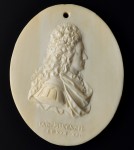 David Le Marchand was born in Dieppe on October 12, 1674, to a family of Hugenot artists and ivory carvers. When the Edict of Nantes granting religious freedom to French Protestants was revoked by King Louis XIV in 1685, more than 3,000 Hugenots a significant percentage of the population, fled Dieppe for greener pastures. David Le Marchand, then just 10 years old, and his family may have been among them, or he may have fled in 1694 when an Anglo-Dutch fleet bombarded the city to rubble. Whenever he left Dieppe, we know he arrived in Edinburgh in 1696 because a document has survived granting “Liberty and Licence to David Lemerchand designer and cutter in Ivory to exercise the sd. Arte” on condition that he take on the aspiring artist sons of local burghers as apprentices.
David Le Marchand was born in Dieppe on October 12, 1674, to a family of Hugenot artists and ivory carvers. When the Edict of Nantes granting religious freedom to French Protestants was revoked by King Louis XIV in 1685, more than 3,000 Hugenots a significant percentage of the population, fled Dieppe for greener pastures. David Le Marchand, then just 10 years old, and his family may have been among them, or he may have fled in 1694 when an Anglo-Dutch fleet bombarded the city to rubble. Whenever he left Dieppe, we know he arrived in Edinburgh in 1696 because a document has survived granting “Liberty and Licence to David Lemerchand designer and cutter in Ivory to exercise the sd. Arte” on condition that he take on the aspiring artist sons of local burghers as apprentices.
 Ivory was rare and expensive in Scotland and David Le Marchand’s skills were immediately in demand. The same year he arrived, he secured the patronage of the powerful Mackenzie family. His first dated and signed relief portrait medallion made in Edinburgh was of Sir James Mackenzie, the 22-year-old hellraising son of Sir George Mackenzie, 1st Earl of Cromartie. Three more low-relief portraits — one of the father Sir George, one of Lady Mackenzie of Rosehaugh, one of her 10-year-old son George Mackenzie of Rosehaugh — and one small portrait bust of Sir James followed in quick succession, all completed before 1700.
Ivory was rare and expensive in Scotland and David Le Marchand’s skills were immediately in demand. The same year he arrived, he secured the patronage of the powerful Mackenzie family. His first dated and signed relief portrait medallion made in Edinburgh was of Sir James Mackenzie, the 22-year-old hellraising son of Sir George Mackenzie, 1st Earl of Cromartie. Three more low-relief portraits — one of the father Sir George, one of Lady Mackenzie of Rosehaugh, one of her 10-year-old son George Mackenzie of Rosehaugh — and one small portrait bust of Sir James followed in quick succession, all completed before 1700.
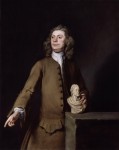 Other Scottish patrons include the Drummond family, the Earl of Leven, the Earl of Cromartie and the Duke of Perth, but even so illustrious a client list wasn’t enough to keep in Edinburgh after the death of Jean Cavalier, London’s premiere ivory artist, in 1699. With the competition gone, David le Marchand moved to London and again hit the ground running, quickly taking Cavalier’s place as the most fashionable portrait sculptor in the city. He counted among his patrons King George I, Queen Anne, the Duke of Marlborough, Sir Christopher Wren, John Locke, Samuel Pepys and Bank of England directors the Raper family. The Rapers commissioned one of his most famous pieces: a bust of Sir Isaac Newton donated to the British Museum by a Raper descendant which features prominently in a painted portrait of Le Marchand by Joseph Highmore now in the National Portrait Gallery.
Other Scottish patrons include the Drummond family, the Earl of Leven, the Earl of Cromartie and the Duke of Perth, but even so illustrious a client list wasn’t enough to keep in Edinburgh after the death of Jean Cavalier, London’s premiere ivory artist, in 1699. With the competition gone, David le Marchand moved to London and again hit the ground running, quickly taking Cavalier’s place as the most fashionable portrait sculptor in the city. He counted among his patrons King George I, Queen Anne, the Duke of Marlborough, Sir Christopher Wren, John Locke, Samuel Pepys and Bank of England directors the Raper family. The Rapers commissioned one of his most famous pieces: a bust of Sir Isaac Newton donated to the British Museum by a Raper descendant which features prominently in a painted portrait of Le Marchand by Joseph Highmore now in the National Portrait Gallery.

![]() The low relief, slender plaques of ivory of his early Scottish days evolved into much larger, more dynamic works once he was established in London. The carving on his portrait medallions went deeper, creating portraits that projected outwards. This is likely a combination of his artistic development and of his having better access to larger pieces of ivory in London than he had in Endinburgh. One of the greatest examples of Le Marchand’s later work in high relief medallions sold at Sotheby’s in 2013 for $478,732.
The low relief, slender plaques of ivory of his early Scottish days evolved into much larger, more dynamic works once he was established in London. The carving on his portrait medallions went deeper, creating portraits that projected outwards. This is likely a combination of his artistic development and of his having better access to larger pieces of ivory in London than he had in Endinburgh. One of the greatest examples of Le Marchand’s later work in high relief medallions sold at Sotheby’s in 2013 for $478,732.
His career seems to have nosedived in the 1720s. The last datable portrait he carved was of antiquarian Reverend William Stukeley in July of 1722. Less than four years later, on February 3rd, 1726, Le Marchand was admitted to the French Hospital in Rochester, outside London, a charity for sick and destitute Hugenots. He died there a few weeks later on March 17th.
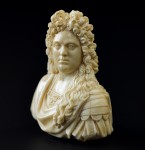 The Mackenzie portraits remained in the family for 300 years, unpublished, unphotographed and known only from published correspondence until 1996. When John Ruaridh Grant Mackenzie, the current Earl of Cromartie and chief of Clan Mackenzie, decided to sell the collection, he wanted to ensure this unique group remained in Scotland. Instead of putting them up for auction, he negotiated privately with National Museums Scotland which was able to acquire the portraits with funding from National Museums Scotland Charitable Trust and the Art Fund.
The Mackenzie portraits remained in the family for 300 years, unpublished, unphotographed and known only from published correspondence until 1996. When John Ruaridh Grant Mackenzie, the current Earl of Cromartie and chief of Clan Mackenzie, decided to sell the collection, he wanted to ensure this unique group remained in Scotland. Instead of putting them up for auction, he negotiated privately with National Museums Scotland which was able to acquire the portraits with funding from National Museums Scotland Charitable Trust and the Art Fund.
Stephen Deuchar, director of the Art Fund, said: “This interesting group of ivories, with its excellent provenance and rich object biographies, is an ideal fit for National Museums Scotland, particularly given the Museum’s interest in Scottish identity and its relationship with the rest of the world. Scotland now has a meaningful presence of works by Le Marchand, which will appeal to scholars, students, artists and families alike. I look forward to seeing them in the new galleries.”
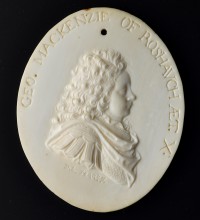
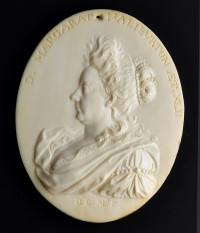
Stunning examples of the art! Just as well the Earl did not put the collection up for auction. I am sick and tired of amazing art collections being broken up and flogged abroad to the highest bidder. I assume the National Museums Scotland paid a fair price.